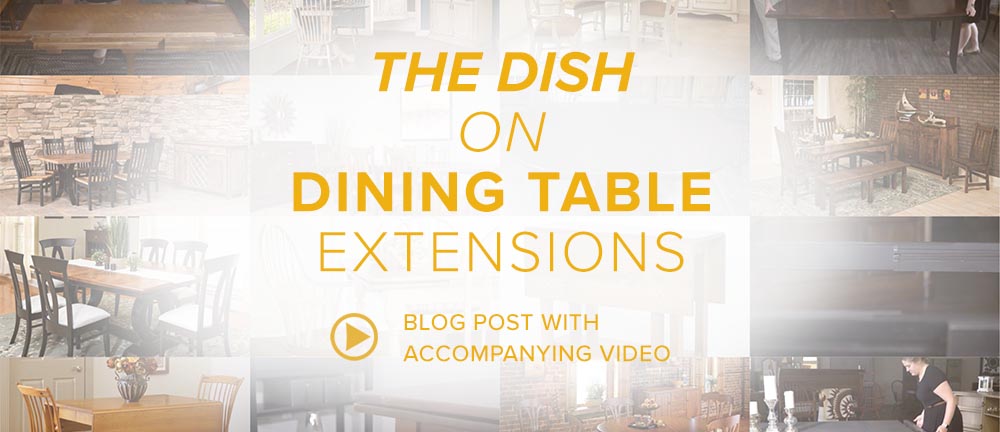
Things to Know About Self-Storing Table Leaves
We imagine table leaves that don’t self-store in the table must be pretty envious of leaves that do self-store. I mean, come on, self-storing leaves get to tuck right inside the wood table that they match. They get to remain in the dining room or kitchen where all the action is. Table leaves that do not self-store in the table are sent to closets or pantries or behind or under other furniture, forgotten until they’re needed.
Table leaves are a dining table feature that’s relied on heavily. They are the essential piece to expand the dining table when you’re hosting big meals or celebrations, or you have a project to do that requires lots of surface space to spread out on. Perhaps you’re familiar with retrieving table leaves from the hall closet, or from behind the sofa or under the bed. Table leaves you have to store elsewhere are just fine, but boy do things get luxurious when the leaves will self-store in the table. Just how does that work? Here are things to know about self-storing table leaves.
They really store inside the dining table.
Yes—self-storing leaves store inside the dining table, as implied by their name. They are available with or without skirts (also called aprons). The skirt or apron continues the edge that matches the rest of the tabletop. So, when the leaf is inserted, the edges match the rest of the table. Table skirts also conceal any hardware under the tabletop. Most dining tables only self-store so many leaves with skirts, some don’t self-store leaves with skirts at all. Sometimes you are given the option for self-storing leaves with or without skirts. It’s important to check the specifics of your table extensions and the table’s storing capabilities before purchasing.


They’re easy to use.
How do self-storing table leaves work? You open up your dining table by pulling it apart from the ends. Unfold (if it’s a butterfly leaf) or take out the leaves that are stored in the table and fit them together. Once they are in place, push the table ends back together.

They help save space since you don’t have to store them elsewhere.
Self-storing leaves won’t take up space elsewhere in your home. You don’t have to shove them in a closet or have them get dusty under the bed. In defense of table leaves that don’t self-store, there are some, particularly with our Amish-made wood tables that come in a lovely leaf storage box. This is a little wood box that you can put the leaves in to store when they are not in use. The next challenge is, yes, you must find a place to store the beautiful wood box that stores the leaves.

They are easy to access to expand your dining table.
Butterfly leaves are one type of self-storing table leaf. They are called butterfly leaves because the way they fold looks a bit like “wings” that fold up on each side and then store inside the table just beneath the tabletop. When you open the table, butterfly leaves are right there and are pretty easy to open.
Stow leaf table extensions store beneath the ends of the table and are fairly easy to raise into place. They pull out and are added on to the ends of the table when needed. When stored on the ends, stow leaf extensions will create a double layer of table top where they are stored.

Benefits of Self-Storing Table Leaves
- You don’t have to find another place in the house to store them.
- You can keep them in the same temperature and humidity level as the table.
- You can access them quickly and easily.
Remember not all table leaves will self-store. Some tables will self-store up to a certain number of leaves. Some will store leaves with skirts and some will not. Always check a new dining table’s leaf-storing capabilities. Those with self-storing leaves are treasures!





